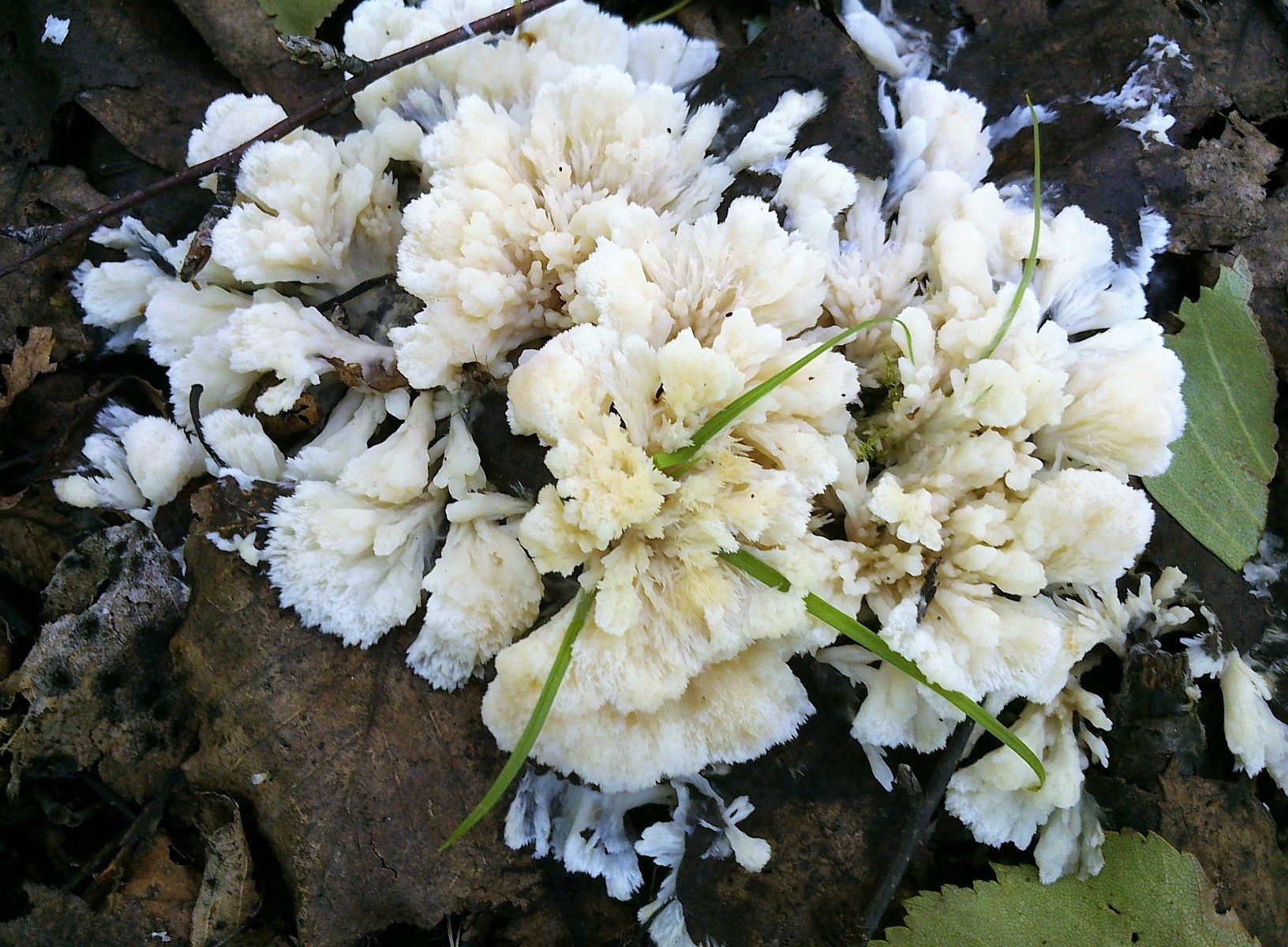Sebacin encrusting (Sebacina incrustans)
:
- Encrusting the skin
- Thelephora encrusting
- Thelephora incrvstans
- Clavaria laciniata
- Merism crested
- Merisma serrated
- Thelephora sebacea
- Peeling off the skin
- Irpex hypogaeus
- Irpex hypogeus Fuckel
- Thelephora gelatinosa
- Dacrymyces albus
- Clavaria rivalis
- Sebacina bresadolae

The fungus forms mycorrhiza with all types of plants and plant debris (herbs, twigs, leaves). It can crawl out onto the ground, litter, or even climb the stems of shrubs and trees.
fruit bodies resupinate (spread over the substrate), as they develop, they acquire a certain coral-like shape, although the word “coral” is somewhat incorrect: the shape of the encrusting sebacine in the adult state is very diverse. Irregularly shaped branching processes may be pointed at the ends, fan-shaped, or resemble a fringe.
The surface of these “branches” is dull, smooth, without scales or hairs, wavy or with small tubercles.
Sizes of fruiting bodies: 5-15, up to 20 centimeters.
Color: white, whitish, white-yellow, not bright. With age, dull yellow, light beige, may have a pinkish tint, especially at the edges of the “twigs”.
Pulp: cartilaginous, waxy-cartilaginous, gelatinous, rubber-gelatinous. Different sources indicate different degrees of brittleness and cartilage, from gelatinous-waxy to cartilaginous consistency. Perhaps this is due to the age of the fungus, or maybe it depends on the substrate.
Taste and smell: not expressed, without a special taste and smell. The taste is sometimes described as “watery” and “sour”.
spore powder: white.
Споры: transparent, smooth, hyaline, wide ellipsoid, 14-18 x 9-10µm
Cosmopolitan. It is widely distributed throughout the world, in North and South America, Europe, Asia and Australia. Grows in forests of any type from June to September. There is information that in some European countries with a warm climate, S. incrustans is also found in spring.
The mushroom is not edible. There is no data on toxicity.
Sebacina encrusting is one of the species of the genus Sebacina. Other species, of which there are few, about a dozen, form either completely resupinate fruiting bodies (adjacent to the substrate without processes), or with “twigs” that differ in shape or color.
Mature fruiting bodies of S. incrustans may be mistaken for Telephora, but the tops of the branches should be observed, they are usually whitish in Telephora; the flesh of the telephora is more “leathery” than “cartilaginous”; and, finally, telephores do not envelop the substrate, the branches grow from a common base.
Sebacine encrusting during growth often creeps onto living plants, envelops the trunks of young trees, shrubs and herbaceous plants, which can lead to the death of the plant.
Photo: Andrey and Andrey.









